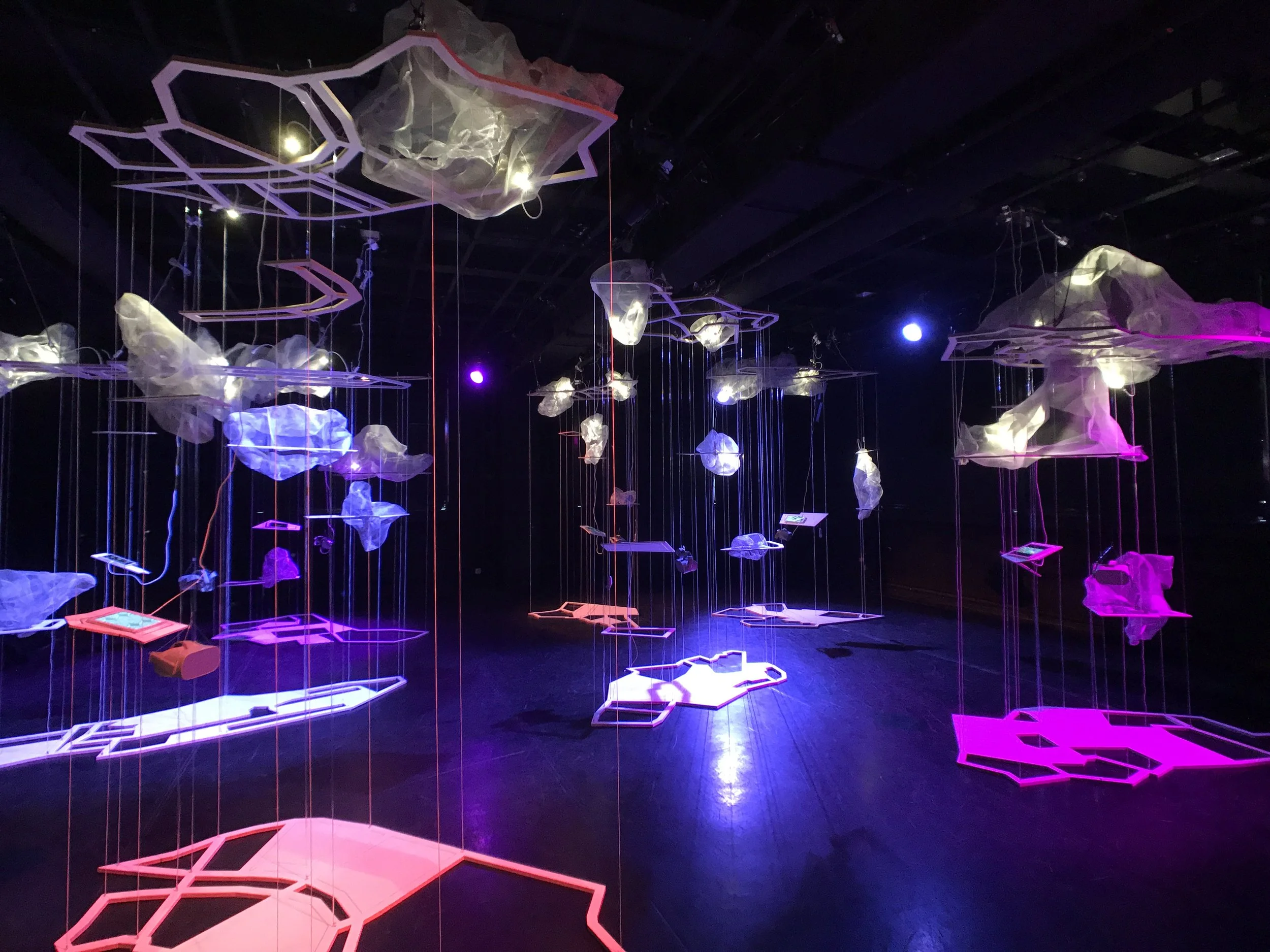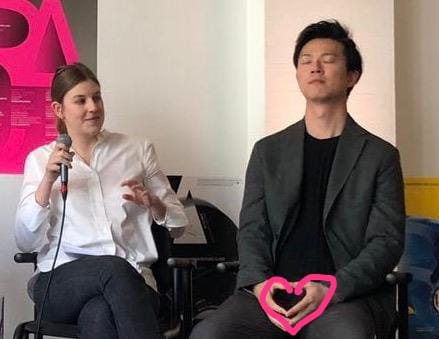Breaking Glass II - Narratives in Boundless Space
Kunstlerhaus Mousonturm, Frankfurt am Main - 2019.05
Spatial Fabulations & Other Tales of Representation in Virtual Reality
Spatial Fabulations and Other Tales of Representation in Virtual Reality comprises of eleven projects that explore various architectural themes spanning from urban narratives to active participation in architectural design in Virtual Reality. The projects engage with real time surveillance, personal and poetic narratives from foreign cities, the work of select architects - such as Bernard Tschumi and Oswald Mathias Ungers, to machine-driven and robotic processes as part of architectural design.
The visitors are invited on journeys that explore insides and outsides of buildings and cities, or to interactively produce or explore forms that are made possible by computers and their algorithms. Subjective experience or creative participation is fused with computerised processes that underlie the contemporary production of architectural forms and our spatial experience.
The eleven projects are presented in a scenography of sculpted objects that are strewn across the floor of Mousonturm's Studio 2. The objects appear as fragments and may or may not belong to a single whole. Yet, they make up a garden of strange objects, anchors or portals to virtual worlds.
The Roco-Korean Basilica of Post-Reality
The Roco-Korean Basilica of Post-Reality is Procedurally generated religious space in the style of Bavarian Rococo Church is seamlessly merged with that of Confucianism Korean Temple. The user is invited to explore vertical spaces that lead to heaven and hell. The aesthetics of digitally generated representation by combining forms that are made purely from machine or computer logic.
Cartographies of Venice
Cartographies of Venice comprises of a series of dramatic reflections in virtual reality on Venice in the age of digital hyper-consumption of images. The exhibition counts nine projects which are presented on physical islands under hovering clouds - both digitally abstracted from the urban fabric of Venice.
The projects respectively problematizes specific aspects of how this exotic city has been and continues to be represented through an endless stream of photographic images. Cartographies of Venice problematizes this space of image consumption and uses the boundless realm of virtual reality for visitors to encounter novel and layered constructions of Venetian interiors and exteriors. The virtual reality environments comprise of a well-less space that is saturated with parts and qualities which have been digitally transported from the immediate environments of Venice. Matching virtual reality engines with digital scanning, the projects superimpose the endless, historical repository of Venice with imagined environments. Hence, the projects suspend the visitors between past, present and future, in a constructed synthesis of inside and outside, between the simulated, ancient materiality of the floating city and the vibrant pictorial space of strange narratives.
Cartographies of Venice was part of Goethe Institute's programme, Performing Architecture in 2018. The projects invites its audience to enter site-specific virtual reality environments as a critical commentary on the 2018 Architecture Biennale as much as Venice as a tourist institution.
Spoils of Venice
Spoils of Venice explores the touristic perception of the city by repurposing objects found on Internet through human and automated, machine tagging. The garnered ready-mades serve as replacement or add-ons to the existing, amalgamated urban fabric of Venice, specifically that staged around Piazza San Marco. Spoils of Venice is a latter-day play on spolia, which is the ancient practice of repurposing building stone for new construction or decorative sculpture. Spoils of Venice extends the historical processes of importation and appropriation of distant aesthetic forms with which the city has evolved through the centuries.













